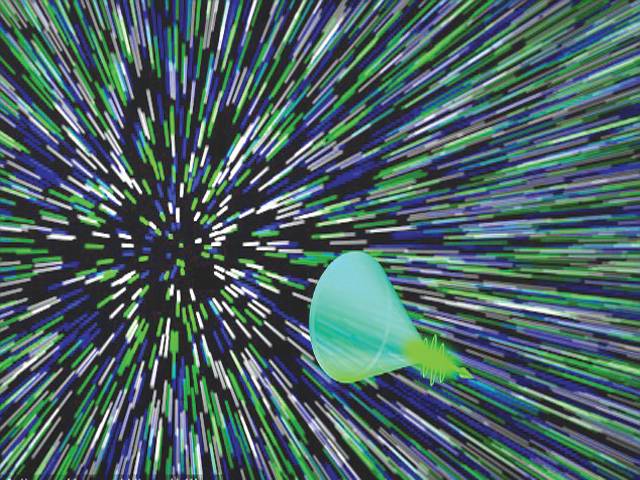LONDON-For the first time, scientists have captured the elusive light scattering phenomenon that occurs when a particle travels at supersonic speed. This event, known as the Mach cone, is much like the sonic boom of an airplane traveling faster than the speed of sound. Researchers recorded it using a camera system capable of capturing 100 billion frames per second, and they say the ground-breaking technology could one day be used to observe neurons firing in the brain.
A photonic Mach cone is created when an ultrafast particle gives off a shock wave, scattering the light around.
Until now, imaging technologies have not been fast enough to catch it in real time, instead requiring hundreds or thousands of measurements to stitch together in order to see the pattern.
In the new paper, published to ScienceAdvances, Jinyang Liang and colleagues reveal the new imaging system that could revolutionize biomedicine.
The researchers designed a system to induce the phenomenon using scattered light from a source tunnel, and to capture it in action.
As a short laser pulse propagates in the tunnel, the scattering emits secondary wavelets in the same wavelength.
‘These wavelets form a wavefront in the display panels by superposition,’ the authors explain. ‘Under this circumstance, the scattering events generate secondary sources of light that advance superluminally to the light propagating in the display panels. ‘At a certain time point, the instantaneous scattering light distribution has a Mach cone structure.’
Using just a single snapshot, their ‘lossless-encoding compressed ultrafast photography’ (LLE-CUP) system can capture the Mach cone in real time.
They were able to obtain three views in the experiments: one which lined up with traditional photography, and two that recorded temporal information on the dynamic event.
By reconstructing the image with this data, they were able to get a dynamic scene of the phenomenon.
This revealed the Mach cone under ‘superluminal’ conditions, with a triangular region dragging behind the pulse.
The researchers say the advancement could vastly improve imaging techniques in biomedicine, allowing for better observations in real time.
‘Single-shot real-time video recording of light-scattering dynamics contributes to the next generation of imaging modalities,’ the authors explain.
‘For example, by leveraging the time-of-flight light signal, the technology can resolve depth information without any motion blurring.’






